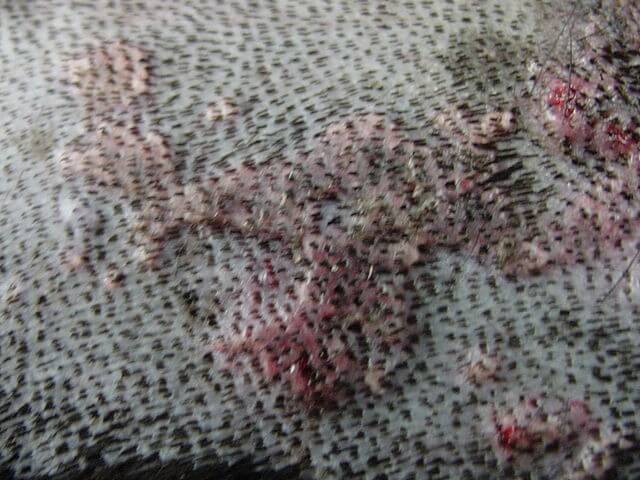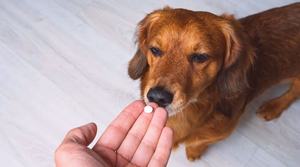
Reviewed & Fact-Checked by
Dr. Chyrle Bonk
Veterinarian (DVM)
Learn more about our Veterinary Review Board »
A dog's health is of the utmost importance to any pet parent, and most will do everything possible to keep them as happy and healthy as possible.
However, there are some conditions that can affect canines that cannot be easily prevented and are often largely out of a dog owner's control.
Understanding what these conditions are can make them less scary and easier to deal with should you have to.
Here we are going to take a look at Cushing's disease, which is also sometimes called Cushing's Syndrome as well.
What is Cushings Disease?
Cushing's Disease, known as hyperadrenocorticism, is a disorder in which the adrenal gland over-produces the hormone cortisol.
This overproduction can then lead to a number of different problems, as cortisol plays a part in many different bodily functions.
Dr. Chyrle Bonk, DVM at Clearwater Valley Veterinary Clinic states that:
"Cortisol is involved in a dog’s stress response, immune function, weight control, and blood sugar levels. So you can see how an imbalance can affect many parts of a dog’s body".
Types of Cushing's Disease
There are three different types of Cushing's disease that can be diagnosed in dogs. All three have different causes, but the end result of too much cortisol is the same.
In 90% - or even a little more - of diagnosed cases of Cushing's syndrome a tumor of the pituitary gland is to blame. The pituitary is a gland that is located at the base of the brain and is responsible for telling the adrenal glands how much cortisol to produce.
Pituitary Dependent Hyperadrenocorticism (PDH) is most commonly seen in middle-aged pups, especially terriers, poodles and dachshunds.
These tumors may be benign or malignant and can be very small in size. What they do however is trigger the overproduction of a hormone called ACTH that triggers an excessive production of cortisol in the adrenal glands.
The second form of the disease, Adrenal Tumour (AT), is caused by a tumor of the adrenal gland itself. If that tumor is found to be benign it can often be surgically removed and the disease will essentially be eliminated.
If however it is malignant it may still be removed but the prognosis for recovery is lessened. This form is more commonly seen in older dogs, especially large-breed dogs.
Finally, Cushing's disease can be triggered if a pup is given too many steroids. This form of the disease is known as Iatrogenic Hyperadrenocorticism (IH). Usually the steroids have been given for legitimate medical reasons but then taken for too long or in doses that were too high for the affected pup's system to process.
Are Some Dog Breeds At a Higher Risk for Cushing's Disease?
Any dog can be affected by Cushing's disease, as it does not seem to have a particular genetic trigger.
However, there is some limited clinical and anecdotal evidence that small terrier breeds may be at a higher risk of pituitary tumors like:
- Yorkshire Terriers
- Jack Russel Terriers
- Boston Terriers
- Dachshunds
- Poodles
- Beagles
- Boxers
Whereas adrenal gland tumors are more common in large breed dogs.
It really should be emphasized however that any dog, including a mixed breed dog, could be potentially at risk.
Should the symptoms of the disease appear they should never be ignored, no matter what kind of dog breed you have.
How Can I Tell If My Dog Has Cushing's Disease?

Calcinosis cutis (skin calcification) in a dog with Cushing's disease. Image Credits: By self - Own work, CC BY-SA 3.0
Although they will vary from pup to pup there are some general symptoms that present themselves that are indicative of Cushing's disease may be present.
The most common are excessive thirst and increased urination. Dogs with Cushing’s will drink a lot and drink often. They will also need to urinate more frequently because of it.
Often a dog's appetite will increase significantly as well. They may be ravenous but never really gain weight.
Other signs include a distended abdomen, with or without actual extra weight gain, urinary infections, lethargy, thickened patches of inflamed skin caused by calcium deposition, and a symmetrical hair loss on a dog's sides.
Any of these symptoms merit a visit to the vet. Often many cases are diagnosed at an early stage because a pet parent was concerned about the hair loss. While this is something that may seem rather inconsequential, it can actually be a useful diagnostic tool.
Also Related: Signs of Hypothyroidism in Dogs
How is Cushing's Disease Diagnosed?
A definitive diagnosis can be tricky.
A dog will need to undergo a series of specific blood tests, ACTH Stimulation Test or the Low Dose Dexamethasone Suppression Test (LDDST), to determine cortisol levels.
An ultrasound or x-ray may be needed as well to check for adrenal tumors.
How Is Cushing's Disease Treated?
The treatment for Cushing's syndrome varies according to type:
In the case of PDH there are medications that can control the amount of cortisol in the body. Medication will need careful monitoring and dosage adjustment but may allow to a dog to live a relatively normal life. Medications are lifelong.
In the case of AT, surgical removal may be curative. If the tumor has spread or is inoperable, medications may be given as well.
In the case of IH the primary treatment is the cessation, or significant reduction of the steroids that caused the problem. The downside here can be, of course, a recurrence of the condition that the steroids were being administered for in the first place.
So this is a treatment that has to be very carefully thought out and administered.
Finally, one note about diet.
Some experts are studying a phenomenon they are terming 'meal induced' hyperadrenocorticism.
This occurs in a very small number of dogs that have extra receptors on their adrenal glands. These receptors produce cortisol in response to a hormone released by the stomach after a meal. This type of hyperadrenocorticism is more easily treated with adrenal enzyme blockers before every meal.



